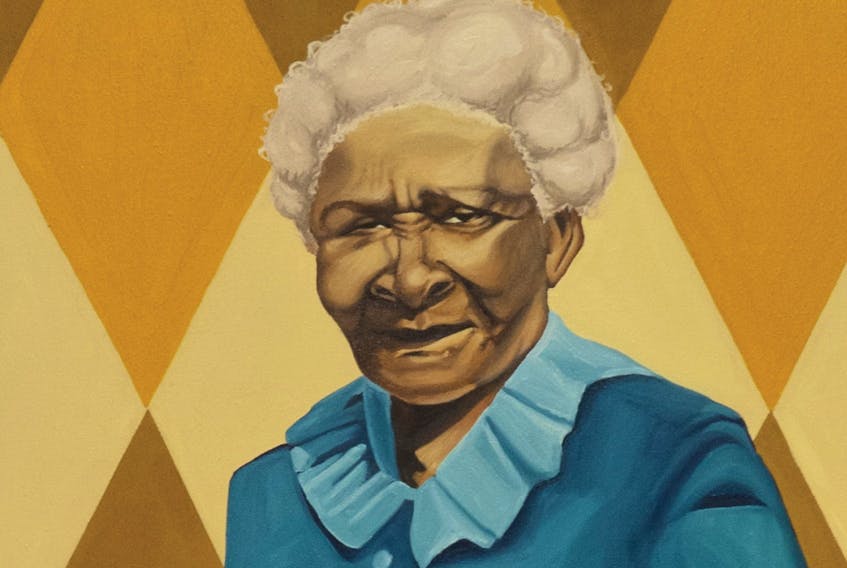Viola Parsons takes readers back more than 100 years to a time when many African Nova Scotians lived in self-built, multi-generational rural homes; homes with small plots of land and gardens, usually clustered around a church, in communities where they relied on their faith in God, each other and their own hard work to survive.
In 1929, Parsons — an orphan — moved to Lucasville, a tiny community near Halifax, then consisting of about 25 homes, to live with her grandmother, Harriet (Anderson) Oliver.
In her short book, My Grandmother’s Days, Parsons records, in great detail, what daily life at the time was like for African Nova Scotia women, the agricultural skills they needed to be self-sufficient and their devotion to their families, church and community. A mother of 13 children, who delivered babies and also worked as a maid, Oliver died on Jan. 24, 1952 at the age of 103.
“She was the pride of the home - very active for a woman of her age. She worked outside as well as inside the home. She loved to be in the garden picking peas and beans in her large apron, which she always wore. In those days, aprons and dust caps were worn a lot,” writes Parsons.
“Grandmother often told us how she would walk to Bedford to do domestic work. It was a distance of about eight miles and she would carry home a small bag of flour under her arm. She used to say, ‘Hard work would never hurt you, but laziness would kill you,’” Parson writes.

Parsons describes Oliver’s dinners of corned beef and cabbage, sauerkraut and spareribs, salt cod and pork scraps and onions, hashed browns, liver and onions, salt herring and salt mackerel, and rabbit stew. With few doctors to serve the community, Oliver had her own remedies for sickness. They were Minard’s and Sloan’s Liniment, mustard poultice, goose grease and molasses, ginger, and peppermint tea. Turpentine in a little warm water and sugar was said to be good for stomach cramps. Liniment rubbed on the temples soothed a headache.
“Mrs. Viola L. Parsons did a great thing in writing My Grandmother’s Days in 1987. She became one of the few Scotians — African-Nova Scotians or Africadians — to tell younger people how our culture developed and of what it once consisted,” poet George Elliott Clarke writes in the book’s foreword.
Parsons wrote her book more than 30 years ago, but the Delmore “Buddy” Daye Learning Institute in Halifax recently published a new version of the book with a beautiful cover by local artist, Letitia Fraser. Their hope is it will help younger generations reconnect with their culture.
“Viola L. Parsons records wondrous details about Black N.S. life “back then,” but doesn’t say much about anti-Black racism. Yet, we know that her times were hardscrabble and dubious,” Clarke writes.
Skipping ahead several decades, Leonard Albert Paris recounts in his memoir, Jim Crow Also Lived Here: Structural Racism and Generational Poverty, Growing Up Black in New Glasgow, Nova Scotia (Friesen Press) what life was like for him in the 1950s and 1960s. Paris’s family home in the community of Priestville, on the edge of New Glasgow, had no plumbing, no telephone, no well, no inside toilet, little insulation, and two wood and coal stoves for heating and cooking.
Born in Truro in 1948, Paris moved to New Glasgow six years later; he lived there until he joined the Royal Canadian Air Force in 1966. In his book, he reflects on his experiences growing up poor and black six decades ago.
“The white citizens in all the local towns, including New Glasgow, made it well known that the Black community members should stay out of their white neighbourhoods or being in their downtown areas. This was routinely enforced at night. A lone Black person stood the chance of being viciously beaten by groups of white youths or men whenever they decided that the Black person should not be in ‘their area or in their town,’” writes Paris, who is now retired after working for 35 years with the University of Toronto campus police. He lives in Mississauga, Ont.
Racial name-calling to and from elementary school was a daily event.
“Once inside the classroom, especially in the younger grades, the systematic racism and belittlement continued with the school curriculum. Little was taught about Black peoples’ history other than slavery and picking cotton. White history talked about great explorers, generals and adventures,” Paris writes.
He calls for people to work together to collectively stop racism and discrimination.
“I hope that by reading this book you will have a better understanding of the ordeals that poor Black community members suffered under to survive and overcome the racism, denigration, and isolation within the wider community,” Paris writes.
“It is up to all of us to eradicate all forms of hate, discrimination, division, and isolation of the people we share with our communities, country, and world.”
Ku Klux Klan in Canada
In his new book, The Ku Klux Klan in Canada : A Century of Promoting Racism and Hate in the Peaceable Kingdom (Formac Publishing), author Allan Bartley traces the Klan’s presence in Canada. Bartley’s research found that the KKK was active in most provinces in the 1920s and ’30s. They used violence, intimidation and lobbying to promote a white supremacist, Protestant order. While the Klan originated in the American South, leaders adapted their racist tactics to Canada.
“Hate has a name. Hate has a face. Hate has an address. It lives in Canada. The Ku Klux Klan’s more than 100-year presence in Canada demonstrates how hate lived and flourished and still endures in the nation sometimes known as the Peaceable Kingdom. Our neighbours were partly to blame, but Canadians can also blame themselves,” Bartley writes in the book’s preface.

State of the System
Paul W. Bennett, director of the Schoolhouse Institute in Halifax, calls for an overhaul of the country’s bureaucratic public school system in his new book State of the System: A Reality Check on Canada’s Schools (McGill-Queen’s University Press).
Bennett argues that “a new set of priorities are emerging: Put students first, deprogram education ministries and school districts, and listen more to parents and teachers in the schools. Design and build smaller schools at the centre of urban neighbourhoods and rural communities. In the wake of COVID-19, we are more aware of the critical need for meaningful public engagement, rebuilding social capital and revitalizing local communities.”

BURDEN
Douglas Burnet Smith’s new book of poetry, Burden (University of Regina Press) is the story of Private Herbert Burden, a shell-shocked, 17-year-old British soldier. Burden was one of hundreds executed for desertion during the First World War. Years later, it is now understood that many like Burden hadn’t committed a crime but were suffering from post-traumatic stress disorder.

Burden’s story is told in the voice of Lance Corporal Reginald Smith, the author’s distant relative. Douglas Burnet Smith discovered papers suggesting that Reginald Smith had been ordered to join in the firing squad that killed Burden. The letters also suggest that Smith was traumatized as a consequence.
Burden is Smith’s 17th book of poetry. He teaches in the English Department at St. Francis Xavier University.









